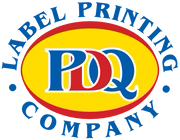
Printing Dangerous Goods Labels: Standards, Sizes & Best Practices
Share
In any workplace or transport setting where hazardous materials are handled, the label on the package isn’t just a sticker - it’s a critical safety device. Using the right label helps you comply with regulations, protect workers and the public, and reduce risk in transit and storage.
This guide walks you through the standards, sizes, and best practices for dangerous goods labels - especially in the Australian context - and showcases how to get compliant labels easily through PDQ Labels:
👉 https://shop.pdqlabels.com.au/collections/dangerous-goods-labels
1. Why Dangerous Goods Labels Matter
Dangerous goods labels:
- Serve as the first line of hazard communication.
- Alert handlers, transporters, emergency responders and end-users to the nature of the materials.
- Are required under the Australian Dangerous Goods (ADG) Code for transport.
- Must remain visible, legible, and durable throughout the handling and transport process.
- Also apply in workplaces under the GHS (Globally Harmonised System) when chemicals are stored or used.
Key takeaway:
Accurate and durable labels help prevent accidents, avoid penalties, and enhance emergency readiness.
2. Key Standards and Regulatory References
2.1 Australian Dangerous Goods (ADG) Code
The ADG Code governs the transport of dangerous goods by road and rail in Australia.
Key requirements include:
- Correct hazard class label (Class 1–9)
- Proper UN number and shipping name
- Markings placed on a visible, flat surface
- Labels meeting minimum size, visibility, and durability standards
2.2 GHS Labelling for Workplaces (WHS Regulations)
For storage and workplace handling:
- Uses GHS pictograms and signal words (“Danger”, “Warning”)
- Requires hazard statements and precautionary statements
- Product identifier and supplier contact details must be included
2.3 Differences Between Transport and Workplace Labels
- ADG labels apply to transport.
- GHS labels apply to workplace storage and use.
- The ADG label can replace the GHS pictogram only when they represent the same hazard-but both should not be used together for the same hazard.
3. Sizes & Label Requirements
While sizes vary depending on package type, here are common guidelines:
- Hazard diamonds are typically 100mm × 100mm for small packages.
- Larger loads or vehicles require bigger placards.
Labels must be:
- Diamond-shaped (for most dangerous goods classes)
- Oriented with one point upwards
- Printed in durable, fade-resistant material
- Placed on flat, unobstructed surfaces
- Legible under normal handling conditions
Tip:
Using standard pre-printed DG labels from PDQ Labels ensures sizes meet compliance.
4. Best Practices for Printing & Applying Dangerous Goods Labels
Follow these to ensure safe and compliant labelling:
1. Use a trusted supplier
- Pre-printed labels reduce the risk of incorrect symbols or sizes.
2. Verify classification & label accuracy
- Confirm correct class, division, UN number, and shipping name.
3. Ensure proper size & orientation
- Diamond shape with one point up
- Fully adhered, not placed over seams or closures
4. Select durable materials
- Weather-resistant materials for transport
- High-adhesion options for rough or uneven surfaces
5. Apply labels early
- Label before palletising or wrapping
6. Inspect before shipping
- Replace damaged, faded, or peeling labels
7. Train staff
- Ensure workers know how to identify hazards and apply labels correctly
8. Keep spare labels available
- Helps avoid delays and ensures consistent compliance
5. Why Order from PDQ Labels
PDQ Labels offers a full range of dangerous goods labels that meet Australian compliance standards.
Benefits include:
- Wide selection of DG classes (1–9)
- Accurate, regulation-aligned artwork
- High-quality materials suitable for transport conditions
- Standard sizes ensuring compliance with ADG Code
- Easy online ordering with fast delivery
Browse the full DG label range here:
👉 https://shop.pdqlabels.com.au/collections/dangerous-goods-labels
6. Quick Reference Summary (Converted to List)
Key Requirements Checklist:
- Use the correct hazard class label (Class 1–9)
- Ensure labels are the right size and easy to read
- Use durable, weather-resistant materials
- Display the UN number and proper shipping name
- Match label type with context (transport vs. workplace)
- Source labels from compliant suppliers (e.g., PDQ Labels)
7. Final Thoughts
Correct dangerous goods labelling is essential for safe handling, transport compliance, and regulatory protection. By following Australian standards and best practices - and using reliable labels - you reduce risk and streamline your operations.
For a simple, compliant solution, shop the full range of DG labels at:
👉 https://shop.pdqlabels.com.au/collections/dangerous-goods-labels



